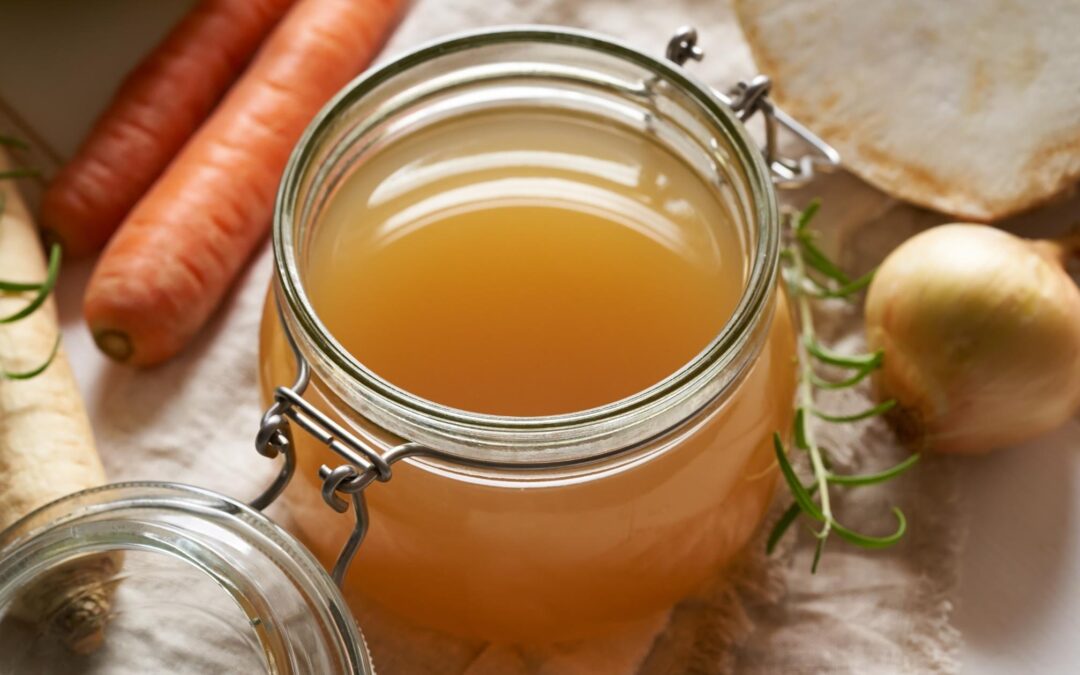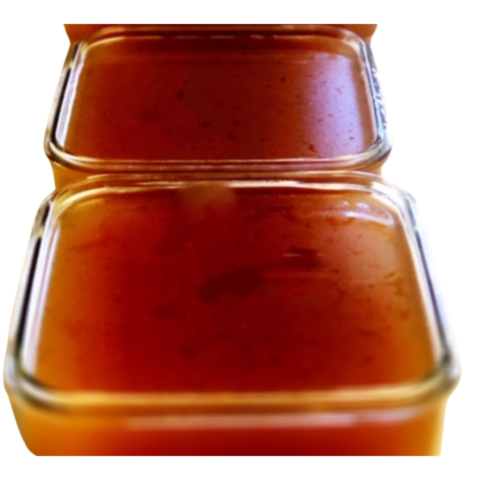Your kitchen scraps have more value than you think! That stash (bones, veggie odds and ends) your about to throw in the trash is not only full of vitamins and minerals, it also can save you money, is environmentally-friendly to re-use, boosts collagen production, improves skin and gut health, and makes your dishes rich and flavorful, from soup to stir fry.
It’s also easy to make and you will find you can add homemade stock to a bunch of different dishes. I will give you a few recipe ideas, extra tips and uses below or watch the YouTube video above. Also, if you are interested in further boosting your beauty naturally be sure to check out my video You Don’t Need Botox Part One and Part Two.
Kitchen Scrap Beauty & Collagen Bone Broth
Equipment
- 1 Dutch oven, crock pot, or stock pot
- 1 ladle for serving or portioning
- 3-4 glass containers for storage
Ingredients
- 1 large bag kitchen scraps from an entire week vegetable scraps, skins, bones, etc.
- 8-12 cups water
- salt, pepper, and any seasoning to taste
- 1 bunch fresh herbs - thyme, rosemary, etc. optional
Instructions
- Collect "kitchen scraps" over the week - this could be stuff left over on your cutting board (think onion, carrot, celery ends, garlic skins, leftover bones of all kinds, skins from other veggies you've peeled, even leftover herb sprigs. Get creative!
- Keep all scraps in the fridge in a large bag, no longer than a week and a half.
- When your bag is full or you're just ready to make broth - inspect that scraps do not have any mold. Remove if so; the rest is fine.
- Pour scrap contents into one large stock pot, Dutch oven, or a crockpot!
- Fill the pot until the contents are covered with water - about 1 1/2 - 2 inches above the contents.
- Add additional herbs and seasoning, *optional
- Put a lid on it and heat the stovetop to low/simmer. If you are using a crockpot - set it on low for 8 hours. You can leave the crock pot unattended which is nice. If you are using a stock pot or Dutch oven - cook over simmer for 4-8 hours. The longer you cook the stock the more nutrient-dense it will be.
- I usually make my stock on Sundays because I know I will be around the house doing things. That's where the crock pot comes in handy, because you can leave the house and go about your day.
- Lastly, once the stock is a deep color and has simmered for a long time, strain vegetables and reserve the liquids in containers of your choice. Extra credit: compost the strained veggies.
- This recipe will yield a lot. However, I go through my entire stock in one week during fall and winter seasons, just in time for the next batch.
What To Use This Stock For:
- You can make your own homemade soup. This makes an excellent, dense, and healthy stock base to any soup.
- Instead of tea, pour yourself a nourishing cup of broth/stock which is excellent for your skin’s natural radiance.
- When I make millet, it calls for several cups of liquid. When making a savory millet recipe, I use nutrient-dense stock instead of water. Check out my Savory Veggie Millet recipe here.
- I use stock in my stir-fry or vegetable dishes instead of using oils, butter, etc. This also is a cost-conscious money-saving hack!
- You can create sauces and dressings for veggie and meat dishes with stock as the base.
- Consider freezing stock in ice cube trays for later use to add flavor to any dish.
Want Other Homemade Lectin-Free Soup Recipes?




